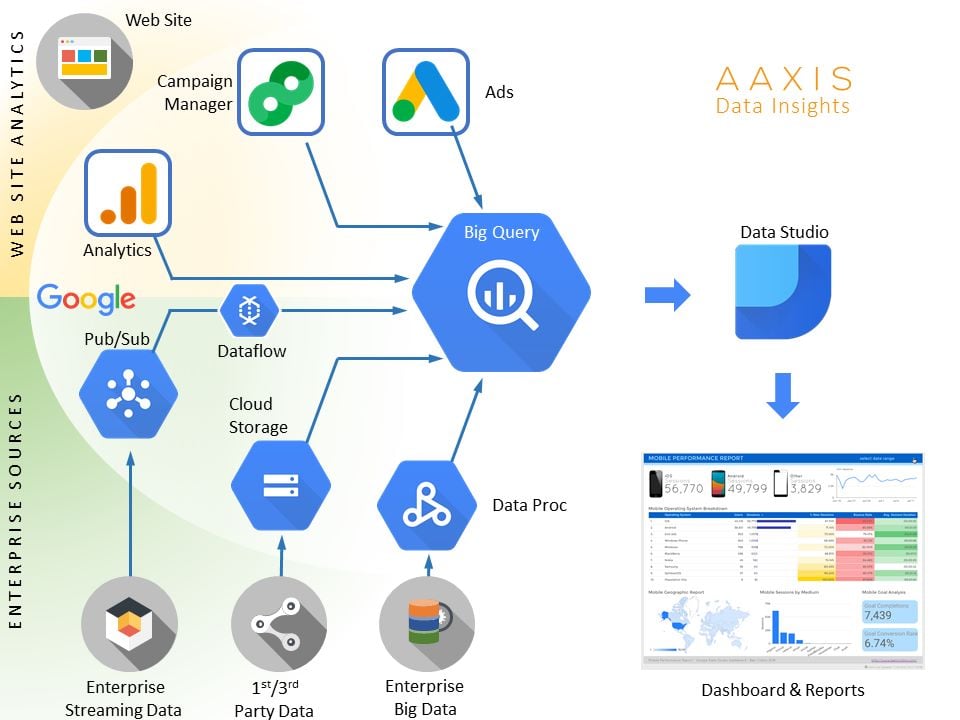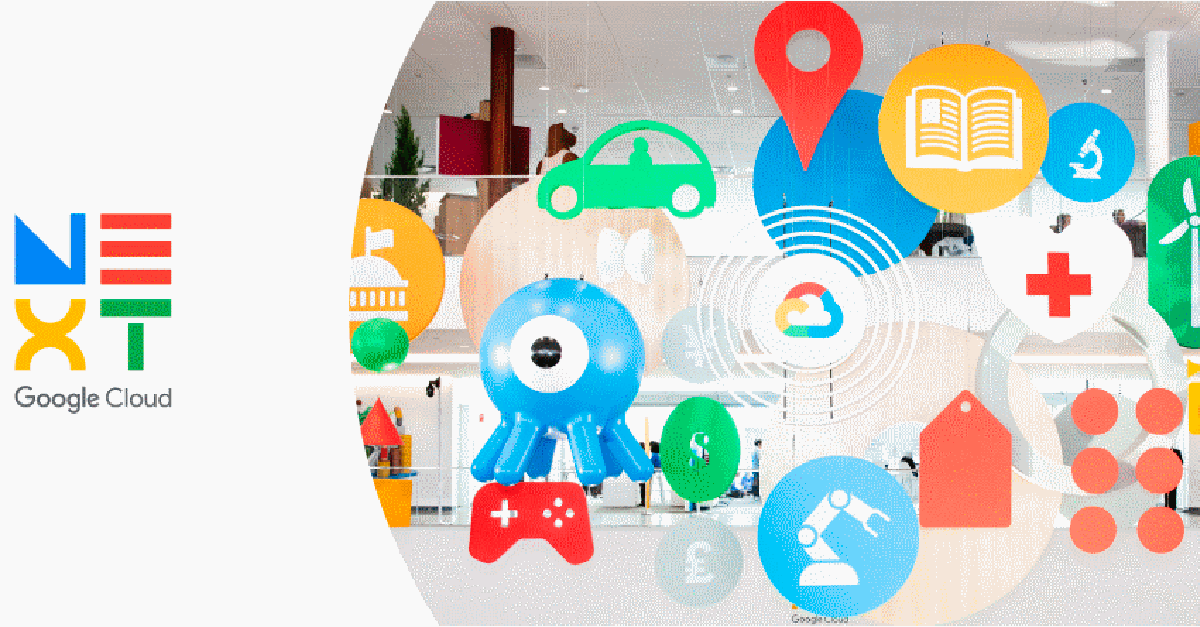Beyond Traditional eCommerce Analytics: Insights to Action with ML/AI – Part 2 of 2
In the first part of the blog series “How to Turn Traditional eCommerce Analytics Into Actionable Insights - Part 1 of 2” the focus was to modernize...
2 min read
 Prashant Mishra
:
Apr 20, 2020 4:27:38 PM
Prashant Mishra
:
Apr 20, 2020 4:27:38 PM
Take advantage of Google’s data processing prowess through AAXIS Data Insights to make superior decisions in real time. A fast, reliable and cost-effective way to combine your digital interaction data with all your back-end data points using Google Cloud Platform.
Google already plays a big part in customer acquisition, awareness & analytics for eCommerce businesses. For example, Google products, like Adwords, are used by enterprises big and small to make marketing tasks like market research, brand awareness, and advertising more robust. Even though Google’s search engine and advertising tools help in creating awareness and attracting potential customers, it is Google Analytics that helps businesses understand the customer journey on their website and curate customer experiences.
This article series helps you go beyond the basic eCommerce website analytics and connect all your customer touch points using Google Cloud data products and integrations to handle the volume, velocity and variety of your data and provide real-time insights that improve your customer engagement and acquisition such as:
Traditional eCommerce analytics are critical for understanding how your customers are interacting with your eCommerce website, but what about your other customer touch points?
Let’s look at a common eCommerce Analytics scenario.
|
Website Analytics Most Companies start with web analytics to ensure they keep track of traffic, customer acquisition, audience, customer journey, and more on their website. The metrics provided via web analytics are especially useful in understanding customer behavior on the website and helping develop marketing strategies. |
vs. |
Data Warehouse Analytics In addition to web analytics, companies generally have their own proprietary setup for data warehousing and analytics. This key component of the analytics structure stores current and historical data collected for decision-making and aggregated reporting. Typically, it is responsible for all data besides what’s gathered from third party sources. |
However, most businesses find it difficult to source and connect data points like user interaction on the website, customer acquisition, customer journey, marketing campaign, and data from third-party analytics platforms in their data warehouse - it simply wasn't designed to bring all these different types of data together.
Google Cloud Platform includes tools to combine eCommerce Analytics with your existing Data Warehouse and other 3rd party data points allowing you to see real-time insights from ALL customer touch points.
Google Cloud Platform provides various tools and integrations to optimize your eCommerce analytics and decision making. The ability to analyze real-time interactions at scale empower you to experiment and optimize the customer experience and customer acquisition through your digital channels. Some example scenarios where businesses can take advantage of a modern eCommerce Analytics Platform are:
Here's what a modern eCommerce analytics life cycle could look like utilizing the Google Cloud Platform.

An example setup for eCommerce analytics on Google Cloud Platform is shown in the steps below.
Our next article Going Beyond eCommerce Analytics with Google Cloud Platform will explain how to automate actions using machine learning and AI once you have your data repository and analytics operational on Google Cloud Platform.
If you want to learn more about how AAXIS Data Insights can help you leverage Google Cloud Platform for your eCommerce Analytics,  .
.

In the first part of the blog series “How to Turn Traditional eCommerce Analytics Into Actionable Insights - Part 1 of 2” the focus was to modernize...

Google is one of the pioneers in harnessing the power of data. Over the years google has put its research and development strength to build data...

At AAXIS, our primary focus is on developing eCommerce solutions. While we are new to the Salesforce Partner Ecosystem, we have more than 20 years of...